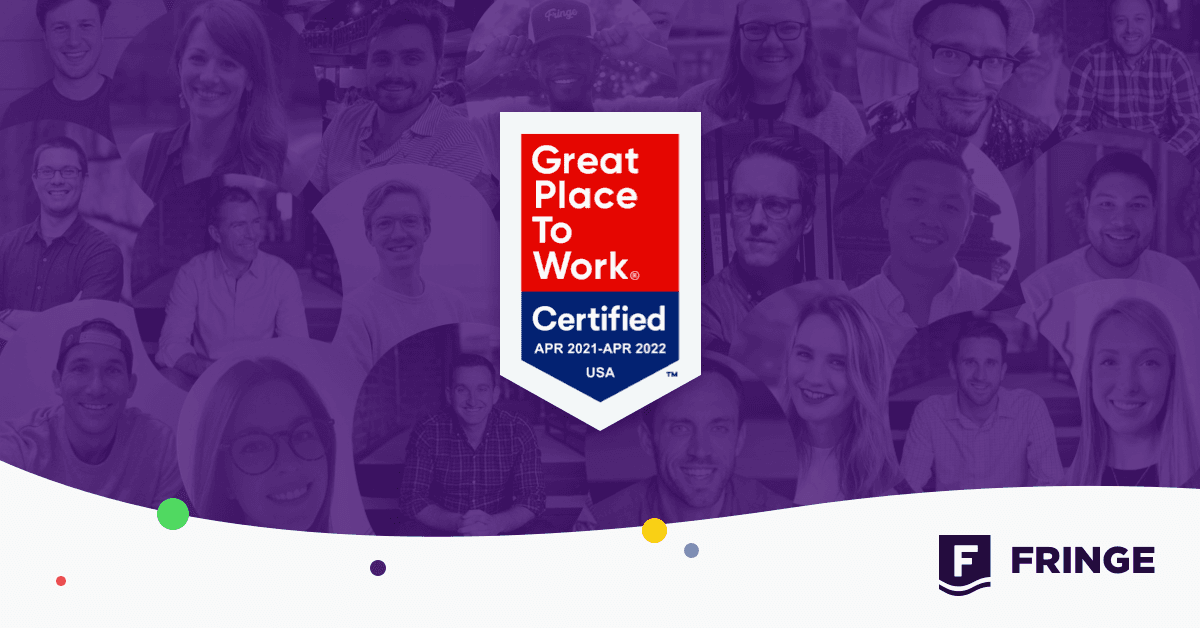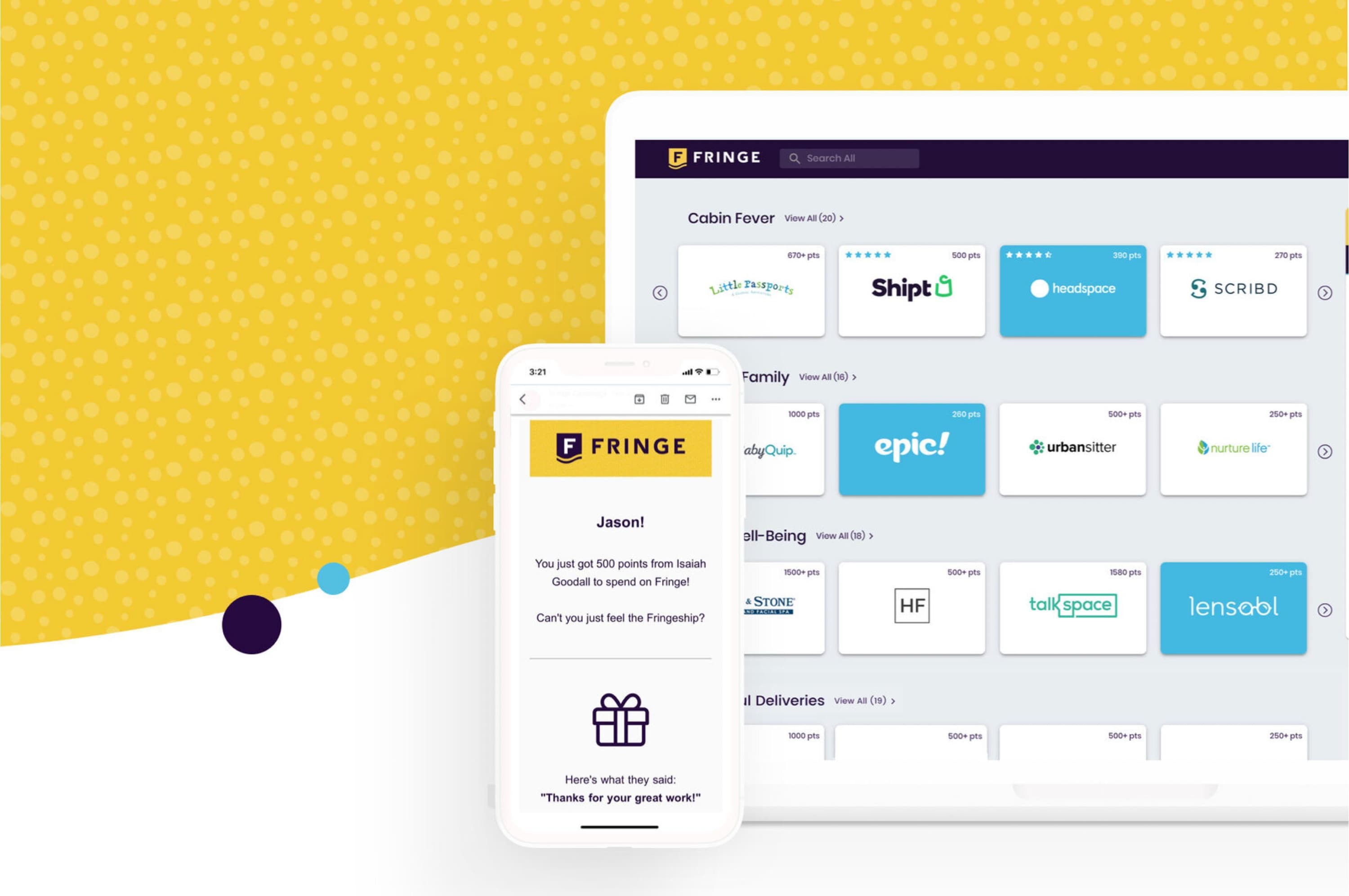Employee Benefits: Understanding the Different Types



Benefits have become the most significant differentiator in distinguishing forward-thinking companies from those struggling to keep pace. Year after year, the top companies on The Great Place to Work list consistently put the lives of their people first. That’s the difference.
This isn’t a recruiting trick; it’s the mindset of great leadership. Competitive wages, insurance and other traditional benefits aren’t enough to attract and retain high-level employees anymore. It all comes down to what companies offer and how they treat their employees compared to their competitors.
The best companies in the world aren’t laggards who offer bottom-tier benefits and call it good enough. They prove time and again that they care about the lives and personal well-being of their people: They challenge themselves to exceed industry standards.
What are Employee Benefits?
Employee benefits, also known as fringe benefits, are non-wage forms of compensation provided to employees in addition to their regular salaries or wages. Benefits can include a variety of perks and amenities that are designed to improve the overall emotional, personal or financial well-being of employees.
Different Types of Employee Benefits

Employee benefits are a crucial part of any job offer and can play a significant role in attracting and retaining top talent. There are 3 main types of benefits:
- Employee benefits required by federal and state laws
- Employee benefits not required by law but meet an industry standard
- Employee benefits considered to be lifestyle benefits
Before diving into the substantive benefits offered by top-level organizations, executives must understand what the industry standards are, and of course, what it takes to exceed them.
This is where older, “traditional” benefits fit into the conversation. Traditional fringe benefits are the most basic benefits that a company can offer. Some of them are expected. Some are required by law.
Employee Benefits Required by Federal and State Laws
There are federal and state laws in place to protect the rights of employees, including regulations regarding various areas of employee compensation, including wage guidelines and unemployment benefits. There are also laws that regulate Medicare, Social Security benefits and Worker’s Compensation.
Under the Affordable Care Act, companies that employ 50 or more people full-time are required by law to provide health insurance and up to twelve weeks of unpaid, job-protected family and medical leave.
Employee Benefits Not Required By Law But Meet an Industry Standard
Traditional benefits have become the definitive industry standard. Even companies that are far from being considered a “Best Place to Work” should offer them to stay at least moderately competitive. Traditional benefits include:
- Health Insurance, Medical Plans
- Vacation Days and Paid Time Off (PTO)
- Paid Sick Leave
- Life Insurance
- Disability Insurance
- Stock Options
- 401K and Retirement Benefits
These benefits are the least a company can offer while still attracting employees. If an organization doesn’t provide some or all of these benefits, it can be a deal-breaker for most people.

Then there are employee benefits that are similar to traditional benefits, but they’re just better versions of them. Companies that offer these in addition to traditional benefits are doing a little bit extra to attract and retain high-quality employees and improve their lives. Somewhat newer, middle-tier employee benefits that are a step up from older, traditional benefits include:
- Vision Insurance
- Dental Insurance
- Required Vacations and Paid Time Off
- Flexible Spending Accounts (FSAs)
- Health Savings Accounts (HSAs)
Offering these benefits may show some effort, but it’s still missing the mark. The most qualified and high-demand employees are looking for much more than graduated versions of traditional benefits.
They’re searching for an organization that values their mental, emotional and physical well-being. They want to work for a company that cares about them as people.
If an organization or executive team wants to set itself apart, it needs to push the envelope and do something unexpected. It needs to offer benefits that will actually have a positive impact on an employee’s life in the here and now.
The Newest Employee Benefits Type: Lifestyle Benefits

If an organization wants to join the ranks of “Great Place to Work,” it must offer more than just basic to middle-tier employee benefits. To figure out what kinds of lifestyle benefits you should begin offering your team, start by asking some simple, fundamental questions about your team:
- How happy are your employees?
- Do they feel understood, valued and recognized?
- Do they believe their executives and supervisors see them as actual, living, breathing people and not just numbers on a spreadsheet?
- Do you support your employees as their whole person, rather than just the work they produce?
- Do your people have a healthy work/life integration?
- Do remote or global employees feel as valued as the ones who work in-office or at headquarters?
Organizations have to change how they think about employee benefits. It’s not about pinching pennies and reinventing recruitment strategies. It’s about mastering employee retention by improving company culture and focusing on employee well-being.
Lifestyle benefits may not be required by law, but they might just have the most significant impact on a team member’s everyday life. Employee fringe benefit examples include:
- Gym Memberships
- Mental Health Services
- Required Vacations
- Subscription Services (Netflix, Hulu, etc.)
- Grocery Delivery
- Childcare (On-Site or Off-Site)
- Gas Stipends
- Education and Career Development Opportunities
- Tickets to Events
- Travel and Transportation Reimbursements
- Maternity/Paternity Leave
The list goes on. Lifestyle benefits are explicitly crafted to improve an employee’s life in and out of work. Why? Because life is about so much more than the bare necessities of existence. It’s about more than just survival and the bottom line.
Most employees will actively search for companies that offer customizable benefits packages. A large percentage of people report that having the option to personalize their employee benefits to fit their lifestyle increased their job satisfaction. For instance, 83% of millennials in the workforce said they would actually change jobs based on what lifestyle benefits are offered.
Lifestyle benefits foster a sense of community in the workplace, reduce everyday stress, create lifelong memories and give people unique and life-changing experiences. They also make people feel respected, recognized and cared for by their employers.
How to Get Started with Personalized, Customizable Lifestyle Benefits

It would be fantastic if companies could offer every lifestyle benefit they could imagine, but, unfortunately, that’s not possible. They can’t provide everything.
Since organizations often employ people with varying needs and lifestyles, this can be limiting. With insufficient options, they’ll have to pick and choose which employee lifestyles they can actively support, which is not conducive to the personal growth of a diverse team. It can be frustrating, and even with the best intentions, a company can still fall short.
That’s where Fringe comes in.

Fringe’s customizable benefits program gives people the opportunity to choose the benefits that will have the most significant impact on their life. This isn’t a one-size-fits-all approach. Instead, it’s an acknowledgment that no two people are the same, and as such, they may want different benefits.
The top companies in the world have embraced customizable lifestyle benefits because they understand that to create a loyal, mission-oriented and happy team, they must put the needs of their employees first.
Frequently Asked Questions
What are the basic benefits for employees?
Basic benefits for employees are both those that are legally required and those that are considered industry standard. Some examples would be medical, dental, and vision insurance, a 401k, and paid time off.
What are some examples of fringe benefits?
Fringe benefits are benefits that go beyond those required by law or industry standards. Examples include gym stipends, wellness programs, student debt repayment, meal delivery, streaming subscriptions, and more.
What are the most popular lifestyle benefits?
The most popular lifestyle benefits are centered on mental and physical wellness, such as providing access to mental health resources, gym memberships, and more. However, companies that only provide these limited options typically see lower utilization rates than those who provide employees choice with their lifestyle benefits.
What benefits do employees want in 2023?
In 2023, employees want benefits that support their wellness. However, there are 4 generations in the workforce today. One-size-fits-all wellness benefits are not going to serve each person the same. Employees know what wellness means to them, so they want their choice of lifestyle benefits, including gym stipends, access to mental health resources, student debt repayment, streaming subscriptions, travel stipends, and more.
Interested in getting started? Fringe’s lifestyle benefits platform enables companies to offer their employees a choice, giving every person the ability to personalize their benefits to fit their lifestyle. Talk to our team to schedule a free demo today!
.png)

.jpeg)